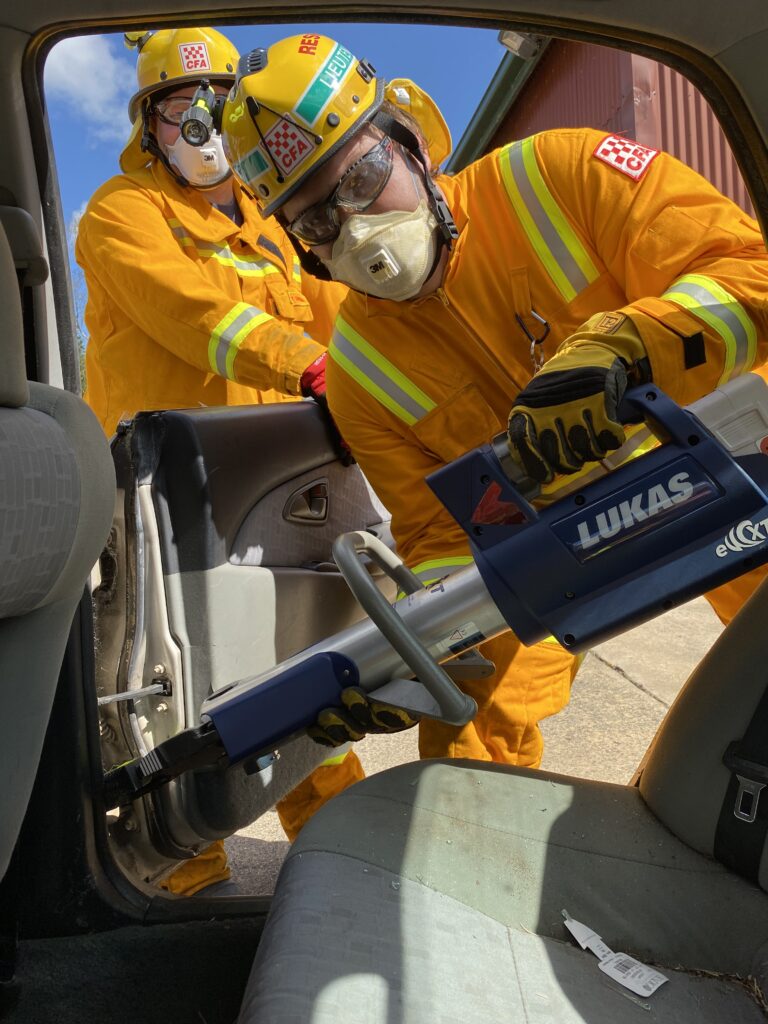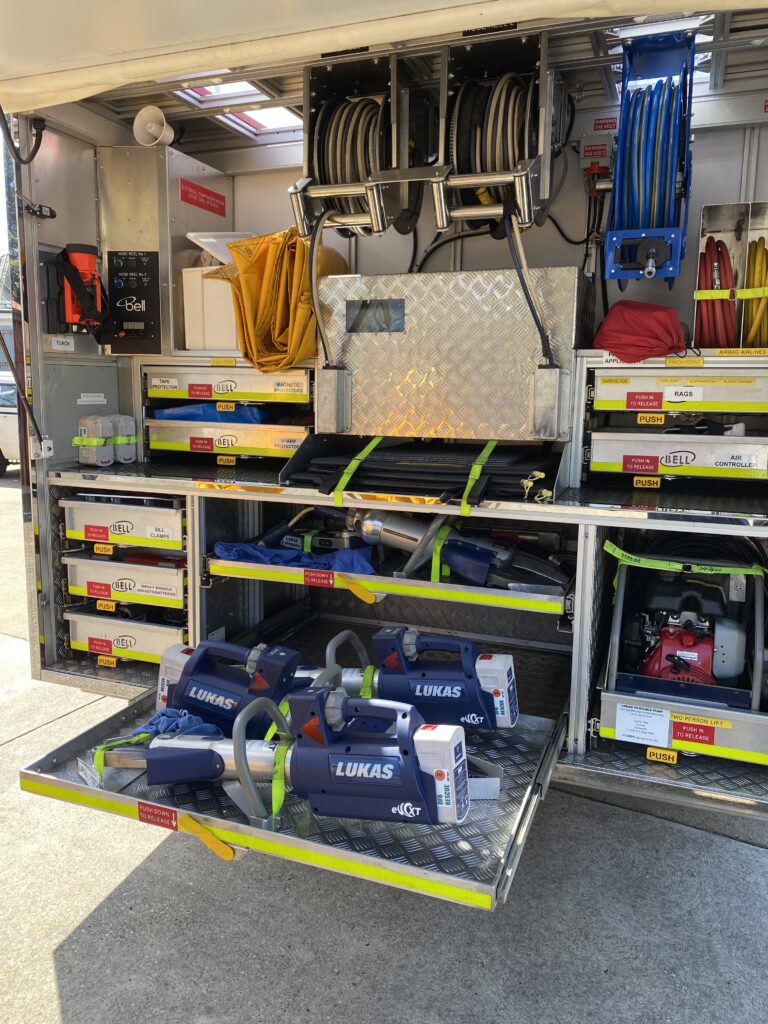October 13th, 2022Battery power to the rescue: Daylesford CFA

THE value of forking out a cool $100,000 or so to upgrade the Daylesford CFA rescue truck was well demonstrated in recent days. When the truck was called in to help free a man trapped in a crushed utility following a head-on collision near Glenlyon, the new addition of battery power to run its critical lifesaving equipment proved a massive help, members of the volunteer brigade say.
“Our rescue truck has had a complete workover and the ‘jaws of life’ have all been changed from hydraulic powered to battery power, which helps tremendously at a rescue, not having trailing hoses,” brigade secretary and treasurer Paul Anderson says.
“We do still have hydraulics on board but it’s been significantly boosted by also having battery power for our spreaders, cutters, rams and lights, which are now all battery powered,” adds the brigade’s Glenn Webster. “It makes it a lot easier at a rescue scene so it’s a big step forward,” says Glenn, training coordinator for both the Daylesford Brigade and Glenlyon Group of brigades of which it’s a part.
“A few weeks ago we had a very serious crash just out of Glenlyon, truck versus ute, and we were able to use both the battery operated tools and the hydraulics. “It was a technically involved rescue, and it was very comforting to have both.”
Glenn says the Daylesford CFA rescue truck is called on to cover a large area, and now 19 of the brigade’s 50 volunteer members are trained up as qualified rescue members.
“Glenn has been instrumental in the training of the crew, who now would be one of the best equipped and most professional in Victoria,” Paul says.
While the battery power enhancement of the rescue truck was funded via the state’s fire services levy scheme, Paul says the eight CFA brigades of the Glenlyon Group are also very grateful for the fundraising support of Daylesford cafe, Cliffy’s.
“Cliffy’s year ran their 2021 Christmas coffee morning again which raised over $17,000 which was split this year among the eight local brigades, who were then able to purchase essential equipment,” he says. The money, which Glenn notes has been spent on vital items like UHF radio, is a great help ahead of the new fire season.
“We’re expecting at this stage that the declaration of the fire danger period may be a little later than most years,” he says. The wet La Niña conditions are more conducive to creating grassfires as distinct from forest fires and they’re also hoped to make for a potentially “quieter” fire season overall.
Words: Eve Lamb | Images: Kyle Barnes











